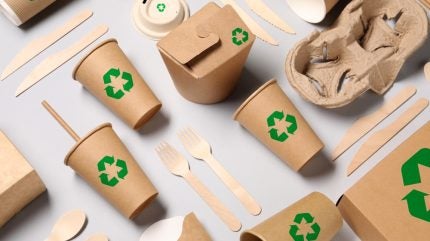
In recent years, the packaging industry has been undergoing a significant transformation. This shift is driven by the increasing demand for sustainable alternatives to traditional materials like plastic.
Among the most promising solutions is paper-based technology, which is emerging as a key player in the future of packaging.
This article explores how paper-based tech is set to disrupt the packaging industry, offering insights into the innovations, challenges, and benefits of this sustainable approach.
A sustainable solution to plastic pollution
The global packaging industry has long relied on plastic due to its versatility, durability, and cost-effectiveness. However, the environmental impact of plastic has become a growing concern.
Non-biodegradable and often difficult to recycle, plastic waste contributes significantly to pollution, particularly in oceans where it poses a threat to marine life.
Governments and consumers alike are increasingly pushing for alternatives that reduce environmental harm.
Paper-based packaging offers a viable solution. Unlike plastic, paper is biodegradable and recyclable, making it an environmentally friendly choice. The transition to paper-based tech is seen as a way to mitigate the negative impact of plastic on the environment.
For instance, paper can decompose in just a few months under the right conditions, whereas plastic can take hundreds of years to break down. This significant difference in decomposition time positions paper as a key material in the fight against pollution.
Moreover, advancements in paper-based technology have led to the development of materials that can match plastic in terms of strength, flexibility, and barrier properties.
These innovations are making it possible to replace plastic with paper in various packaging applications, from food and beverages to cosmetics and electronics.
Innovations in paper-based packaging
The packaging industry is witnessing a surge in innovation, with companies investing in research and development to enhance the capabilities of paper-based materials.
One such innovation is the creation of barrier coatings that provide protection against moisture, grease, and oxygen. Traditionally, plastic has been used for its excellent barrier properties, but recent advancements have enabled paper to achieve similar results.
For example, new types of biodegradable coatings are being applied to paper to make it resistant to liquids and oils, which is crucial for food packaging. These coatings are made from natural materials like starch or cellulose, ensuring that the entire package remains compostable.
In addition, these coatings can be engineered to allow for easy printing, enabling high-quality branding and labelling without the need for additional materials.
Another exciting development is the use of nanotechnology in paper packaging. Nanocellulose, derived from plant fibres, is being used to create lightweight, yet strong, paper-based materials.
These materials are not only sustainable but also offer enhanced durability and flexibility, making them suitable for a wide range of packaging applications. As nanocellulose technology continues to evolve, it is likely to play a crucial role in the future of packaging.
Overcoming challenges in the shift to paper
While the benefits of paper-based packaging are clear, the transition from plastic is not without challenges. One of the primary obstacles is the cost. Producing high-performance paper-based materials can be more expensive than plastic, particularly during the initial stages of scaling up production.
However, as demand grows and production processes become more efficient, costs are expected to decrease.
Another challenge is the need for significant investment in infrastructure and machinery. Many packaging facilities are currently set up to handle plastic materials, and shifting to paper requires substantial changes.
This includes updating equipment, training staff, and ensuring that paper-based products meet the same standards as their plastic counterparts. For some companies, these changes represent a considerable financial and logistical undertaking.
Despite these challenges, the industry is making progress. Collaboration between packaging companies, material scientists, and technology providers is essential to overcoming these hurdles.
By working together, these stakeholders can drive the development of cost-effective and efficient paper-based solutions that meet the needs of both businesses and consumers.
The future of paper-based packaging
As the world becomes increasingly conscious of environmental issues, the demand for sustainable packaging solutions will continue to rise. Paper-based technology is well-positioned to meet this demand, offering a practical and eco-friendly alternative to plastic.
In the coming years, we can expect to see further innovations in paper-based materials, particularly in terms of their performance and cost-effectiveness.
The shift to paper-based packaging is also likely to be supported by government regulations and consumer preferences. Many countries are already implementing policies to reduce plastic waste, such as banning single-use plastics and promoting recycling.
These regulations are expected to accelerate the adoption of paper-based packaging as companies strive to comply with new laws and meet consumer expectations.
In conclusion, paper-based technology is set to disrupt the packaging industry in a significant way. By offering a sustainable, versatile, and increasingly cost-effective alternative to plastic, paper-based packaging is poised to become the material of choice for many applications.
While challenges remain, the ongoing innovations in this field suggest a promising future for both the packaging industry and the environment.
As companies continue to embrace these technologies, the packaging landscape will undoubtedly evolve, leading to a more sustainable and responsible industry.



